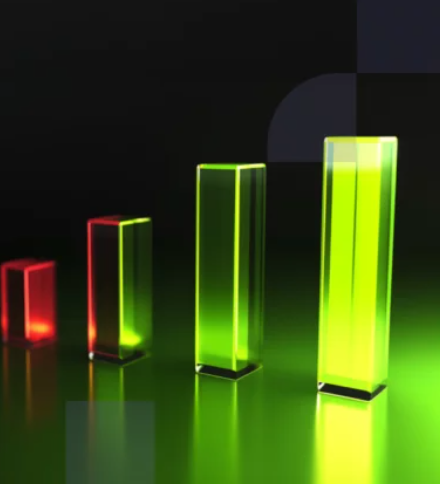Mastering Bullish and Bearish Harami Patterns in Crypto Trading
- 68 Views
- admin
- 12/19/2024
- Cryptocurrency
Understanding price patterns is a cornerstone of successful cryptocurrency trading. Among the various candlestick formations, the Harami pattern stands out for its potential to signal trend reversals. Whether you’re aiming to catch the next upward movement or preparing for a downturn, identifying bullish and bearish Harami patterns can offer timely insight into market shifts. Here’s a comprehensive look into what these patterns are, how to spot them, and how to incorporate them into your trading strategy.
What Is a Harami Candlestick Pattern?
The Harami pattern is composed of two candles: the first is a larger candle that reflects the prevailing trend, and the second is a smaller candle whose body is entirely enclosed within the first. This formation suggests a possible change in momentum. A bullish Harami signals a potential upward reversal following a downtrend, while a bearish Harami indicates a likely downward shift after an uptrend.
Key Traits of Harami Formations
A Harami pattern is defined by:
- The First Candle: A long candlestick that reflects strong market sentiment in the current direction.
- The Second Candle: A smaller candle nestled within the body of the first, signaling indecision or weakening of the current trend.
The size and position of the second candle are critical—it must stay within the range of the first, reinforcing the idea of fading momentum.
The Bullish Harami Explained
The bullish Harami appears after a sustained decline. The first candle is a long bearish one, indicating selling pressure. The second is a small bullish candle that forms within the body of the first. This setup suggests that selling may be losing steam and buyers could be stepping in.
Example
Imagine Bitcoin has been dropping and closes one day with a strong bearish candle at $95,000. The next day, a small bullish candle closes within the range of the previous day—perhaps at $95,100. This could indicate a shift in market sentiment, giving traders a potential buying opportunity.
Trading a Bullish Harami
To trade a bullish Harami pattern effectively:
- Confirm a Downtrend: Ensure the pattern follows a clear downtrend.
- Wait for Closure: Don’t act until the second candle has closed within the range of the first.
- Entry Point: Consider entering a long position if the second candle closes above the first candle’s open.
- Risk Management: Set a stop-loss just below the low of the second candle.
- Exit Plan: Look to take profits at a nearby resistance level or when momentum begins to fade.
What Is a Bearish Harami?
A bearish Harami forms after a period of rising prices. The first candle is long and bullish, while the second is a small bearish candle within the range of the first. This setup suggests that buyers may be losing control and a downward movement could follow.
Example
Assume Bitcoin is climbing and reaches $95,000. A long bullish candle forms, followed by a short bearish candle that closes at $94,500 within the range of the previous day. This may hint that sellers are regaining strength, setting the stage for a potential price drop.
Trading a Bearish Harami
To make use of this pattern:
- Confirm an Uptrend: This pattern must come after sustained upward momentum.
- Let the Pattern Complete: Wait for the bearish candle to close inside the previous bullish candle.
- Enter a Short Position: If the second candle closes below the open of the first, this may signal a selling opportunity.
- Place a Stop-Loss: Set it just above the high of the second candle to manage risk.
- Profit Target: Look to exit near a support level or if bullish momentum returns.
Recognizing the Harami Cross Variants
Harami patterns also include cross variations, where the second candle resembles a doji—signaling greater indecision.
- Bullish Harami Cross: Appears after a decline, featuring a long bearish candle followed by a doji within its body.
- Bearish Harami Cross: Occurs after an uptrend, marked by a strong bullish candle and a doji that fits within it.
The presence of a doji emphasizes market hesitation and strengthens the potential reversal signal.
Strengthening the Signal with Indicators
While Harami patterns offer valuable signals, combining them with technical indicators can boost their reliability:
- RSI (Relative Strength Index): Can confirm oversold conditions during a bullish Harami or overbought signals in a bearish Harami.
- MACD (Moving Average Convergence Divergence): Helps verify momentum shifts by showing when the MACD line crosses the signal line.
- Support and Resistance Levels: Reversal patterns forming near key levels often carry more weight.
- Fibonacci Retracement: Useful for spotting likely reversal zones and confirming Harami patterns.
Weighing the Benefits and Risks
Advantages:
- Offers early signs of trend reversals
- Simple and easy to identify on price charts
- Can be strengthened with other analysis tools
Risks:
- Can generate false signals, especially in choppy markets
- May indicate consolidation instead of a full reversal
- Requires confirmation and good risk management to avoid losses
Final Thoughts
The Harami pattern—both bullish and bearish—can be a useful addition to any trader’s toolkit. Though it may appear straightforward, it should not be used in isolation. Evaluating it within the broader market context and validating with other indicators is essential for making informed decisions. When used wisely, this candlestick formation can help traders better anticipate market shifts and enhance their trading strategy.
Recent Posts
- How AI is Revolutionizing Architectural Design: A Look at Tools, Trends, and the Future
- Streamlining Cyber Risk Assessments Through Automation
- Understanding the Difference Between Blockchain and Distributed Ledger Technology
- Is Bitcoin Mining Still a Viable Venture in 2025?
- Exploring AI: Unveiling Possibilities, Challenges, and Future Implications


